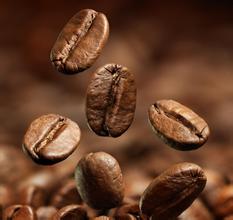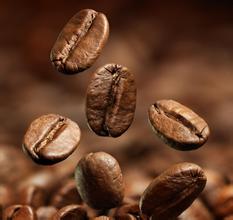An introduction to the quality characteristics of the method of describing the Flavor of Coffee production area in Las Haas Manor, Costa Rica
Costa Rican coffee beans
Lajas was also one of the first estates in Central America to begin honey and sun treatments. Solarization is a very traditional practice that uses minimal resources, but it is difficult to do well because of the many factors beyond your control. Francesca added many innovations, such as measuring the sugar content of the fruit with a Brix meter, which is often equipped in the wine industry, and determining the best time and treatment for harvesting according to Brix sugar content. The Brix value of ordinary fruits is 14 for apples, 12 for lemons and 18 for passion fruits, but the coffee cherries of Lajas can reach 21-22%.
The color of raw beans is between sun and water. It is cleaner and greener than traditional sun beans and slightly smaller than traditional Costa Rica beans.
Costa Rica Tara Pearl is known to many in the world of fine coffee. It is located in the fertile volcanic region of Central America. It has a humid climate and fertile volcanic soil. It has abundant rainfall all year round. It has a high altitude and a dense forest natural shade. It provides a unique growing environment for coffee growth. Today, the Brista Coffee West Point Training School is bringing to our friends Tara beads, beans from Costa Rica's most famous growing area, beans from La Pastora Farm. Tarazhu currently has 26 member farms. The Tarazu region is arguably Costa Rica's most famous coffee producer, Costa Rica's most famous coffee was introduced from Cuba in 1729, and today its coffee industry is one of the most well-organized in the world, producing up to 1700 kilograms per hectare. Costa Rica has a population of 3.5 million, but coffee trees number 400 million, and coffee exports account for 25% of the country's total exports. Costa Rica's volcanic soils are fertile and well drained, especially in the Central Plateau, where the soil consists of successive layers of ash and dust. Costa Rica was thus the first country in Central America to grow coffee and bananas for commercial value. Coffee and bananas are the country's main exports. In Costa Rica, Arabica coffee trees are grown, improved to make the quality of the beans better and more stable; coffee trees are pruned to a height of about 2 meters to facilitate harvesting; coffee is eaten as the seeds in the fruit are brewed with water. After picking the green coffee beans, the seeds (i.e. coffee beans) can only be roasted after removing the peel, pulp, seed membrane and sunlight exposure. Some processes can be replaced by machines, which increases the speed of coffee production. However, there is no machine to pick coffee. It must be manually used.

Important Notice :
前街咖啡 FrontStreet Coffee has moved to new addredd:
FrontStreet Coffee Address: 315,Donghua East Road,GuangZhou
Tel:020 38364473
- Prev

Costa Rican Medium Deep Roast Coffee Grind Scale Quality Taste Treatment Flavor Description
Costa Rican medium deep roasting The process of crushing roasted coffee beans is called grinding. The props for grinding coffee beans are called grinders. The ideal time to grind coffee is before it is cooked. Because ground coffee is easy to oxidize and lose flavor, especially in the absence of proper storage, coffee powder is also easy to change flavor, naturally unable to cook a fragrant coffee. some people
- Next

Vietnam Weishuo Coffee Bean Arabica Karabasta mixed Bean Flavor description Grinding degree
Vietnam Coffee Vietnam's geographical location is very favorable for coffee cultivation. Southern Vietnam has a hot and humid tropical climate, which is suitable for growing ROBUSTA coffee, while the north is suitable for growing ARABICA coffee. Coffee production in Vietnam has the following characteristics: (1) because there is no effective way to deal with fallen leaves, medium-grain coffee was selected as the main variety in the early 1980s. (2) to seed
Related
- Detailed explanation of Jadeite planting Land in Panamanian Jadeite Manor introduction to the grading system of Jadeite competitive bidding, Red bid, Green bid and Rose Summer
- Story of Coffee planting in Brenka region of Costa Rica Stonehenge Manor anaerobic heavy honey treatment of flavor mouth
- What's on the barrel of Blue Mountain Coffee beans?
- Can American coffee also pull flowers? How to use hot American style to pull out a good-looking pattern?
- Can you make a cold extract with coffee beans? What is the right proportion for cold-extracted coffee formula?
- Indonesian PWN Gold Mandrine Coffee Origin Features Flavor How to Chong? Mandolin coffee is American.
- A brief introduction to the flavor characteristics of Brazilian yellow bourbon coffee beans
- What is the effect of different water quality on the flavor of cold-extracted coffee? What kind of water is best for brewing coffee?
- Why do you think of Rose Summer whenever you mention Panamanian coffee?
- Introduction to the characteristics of authentic blue mountain coffee bean producing areas? What is the CIB Coffee Authority in Jamaica?

